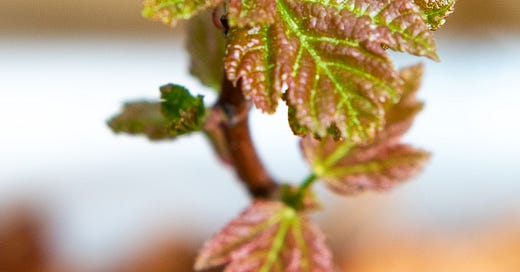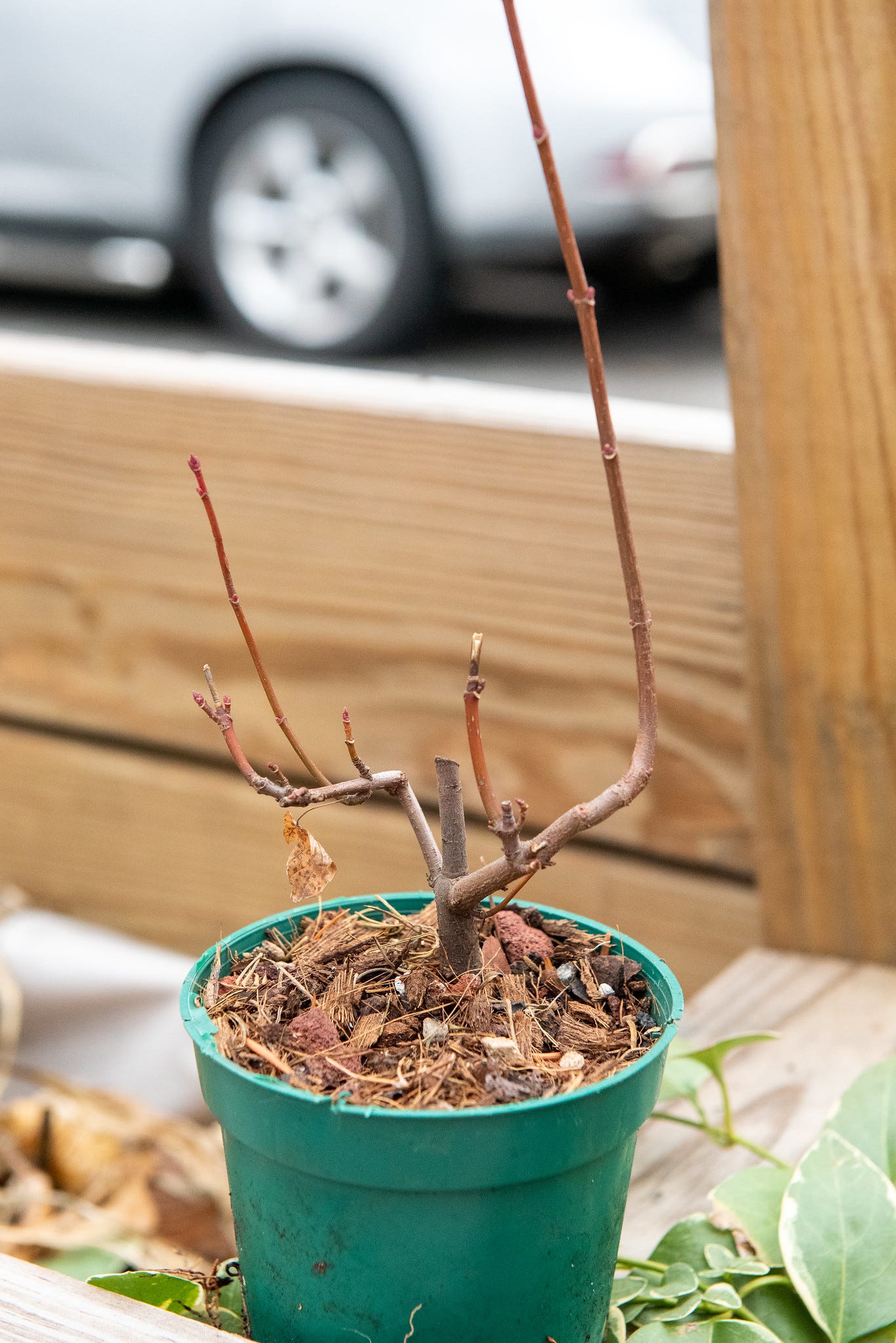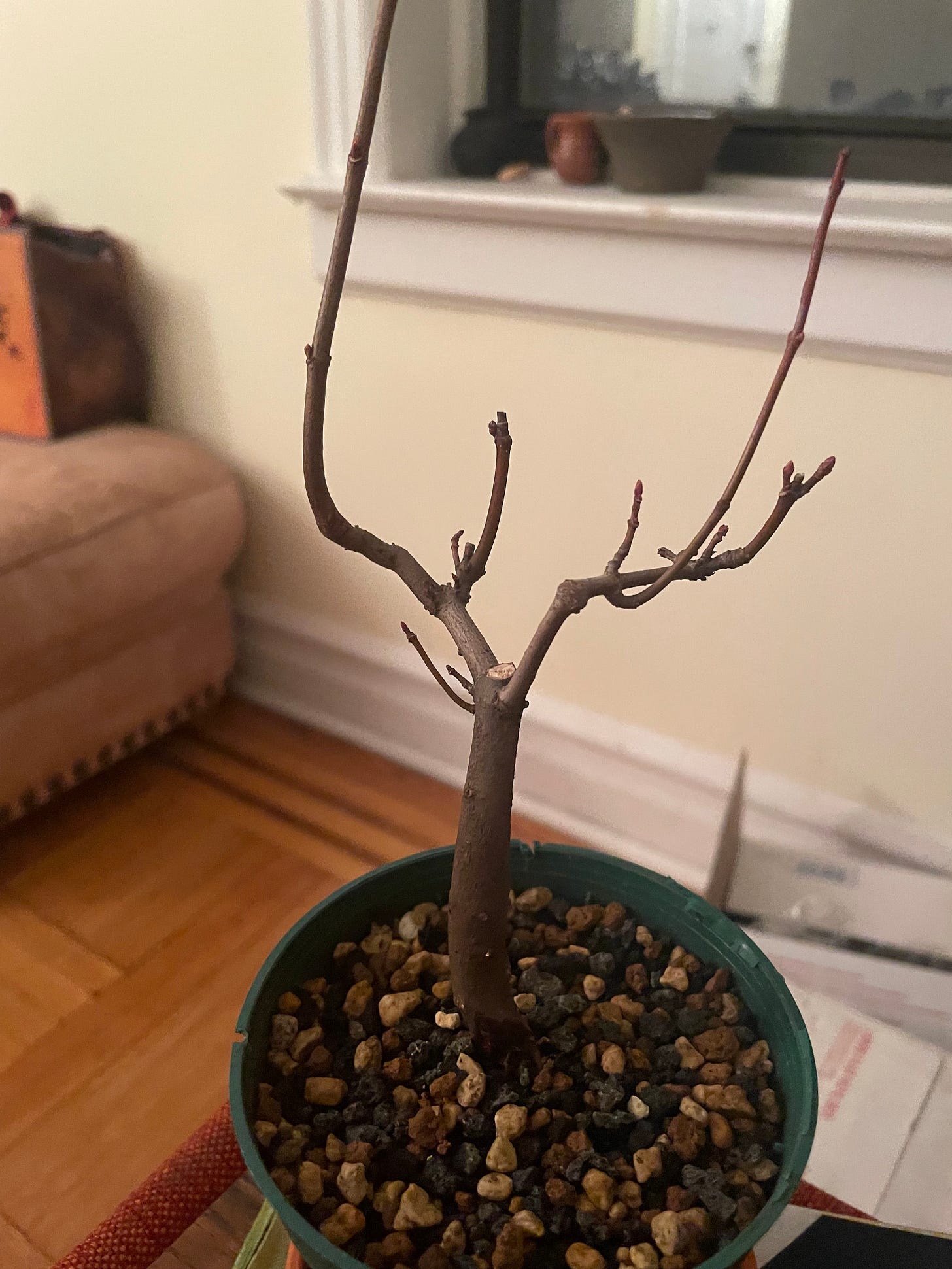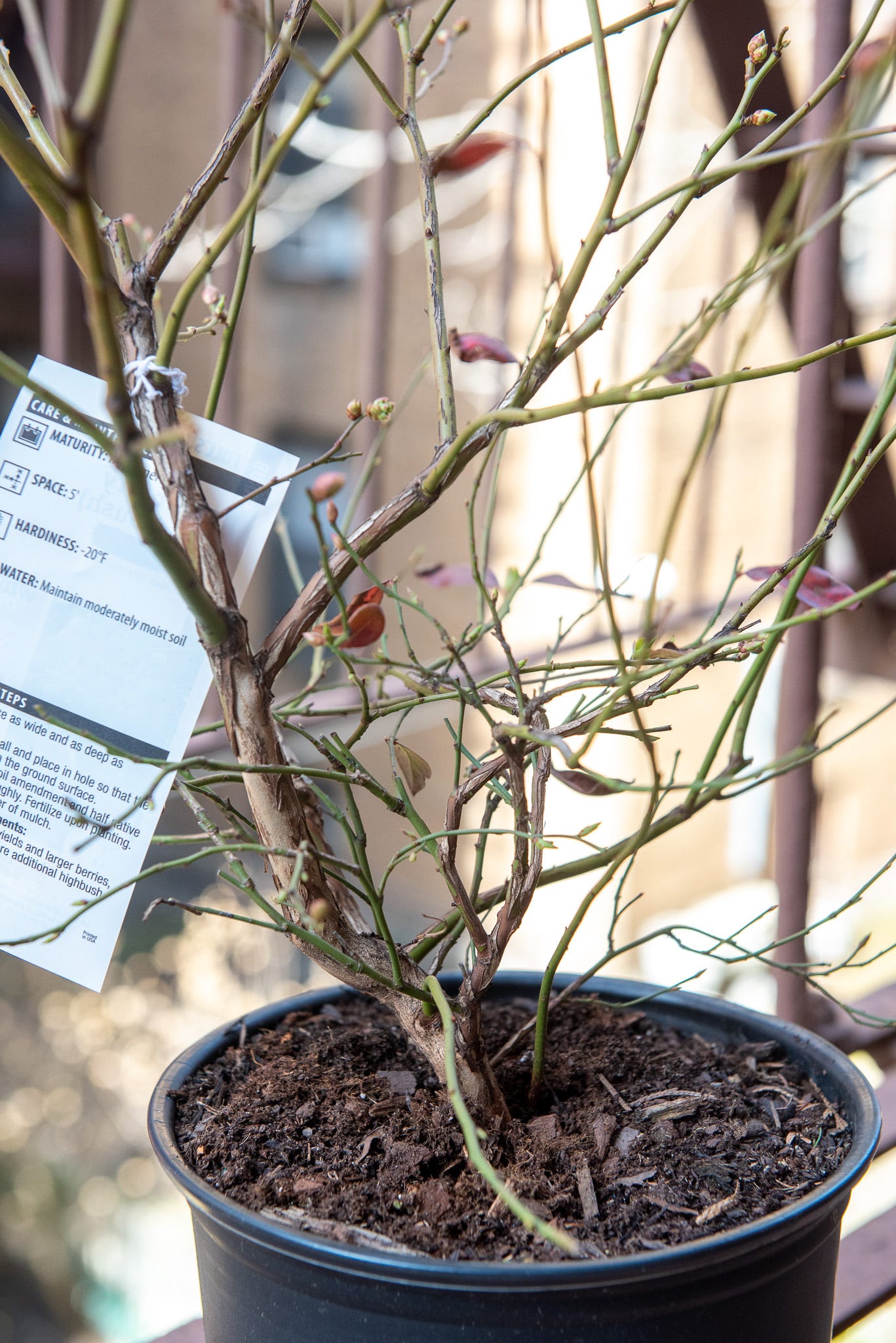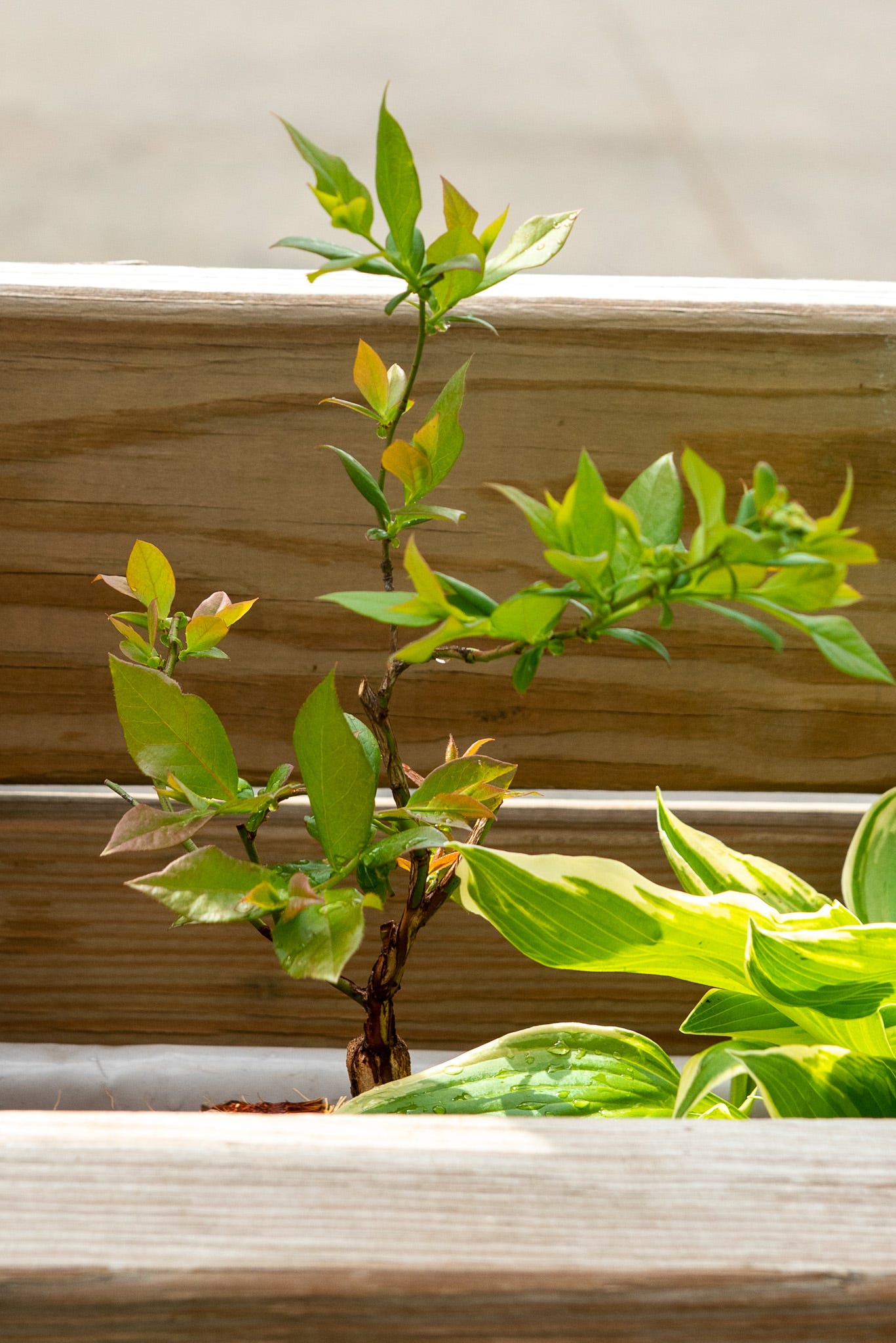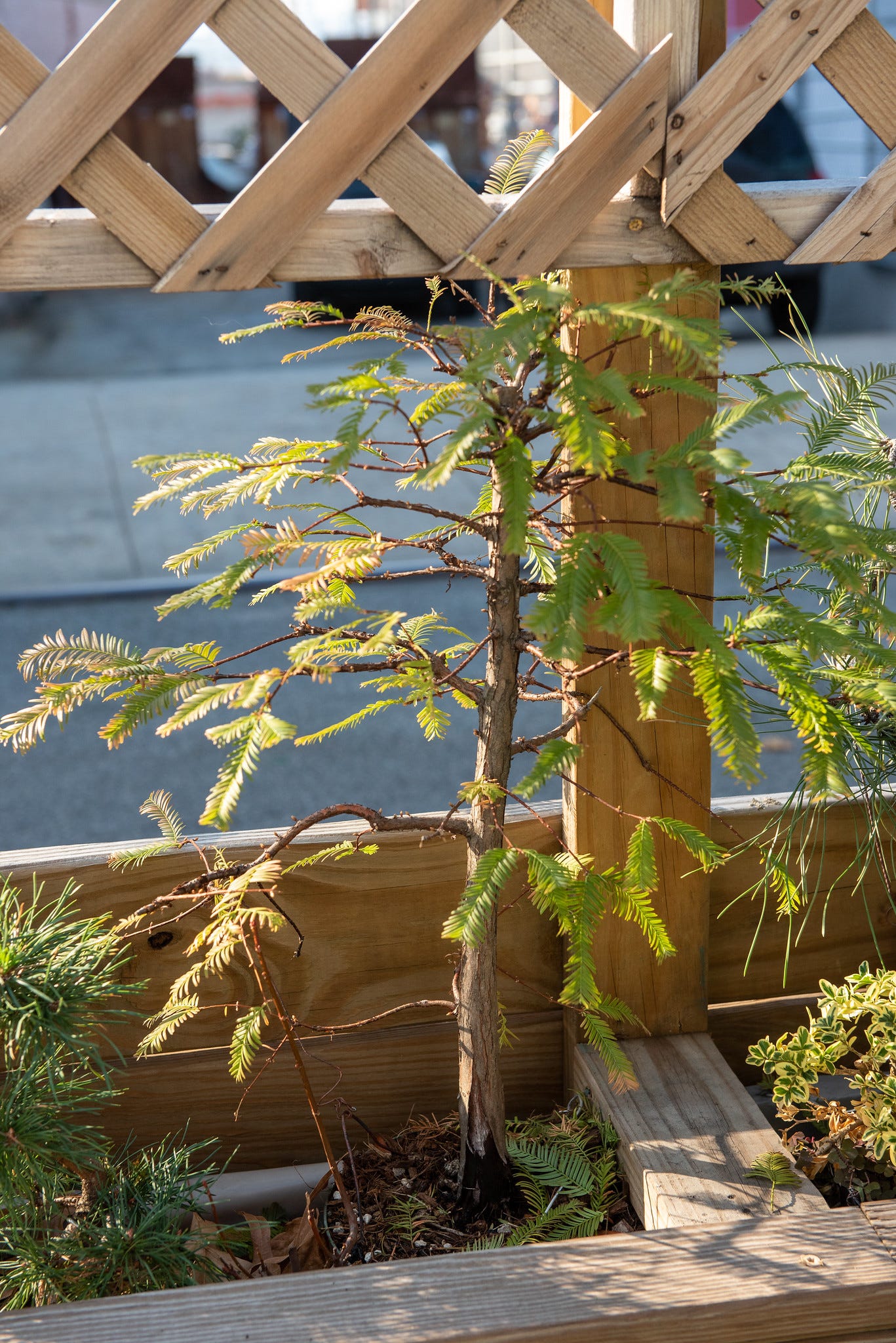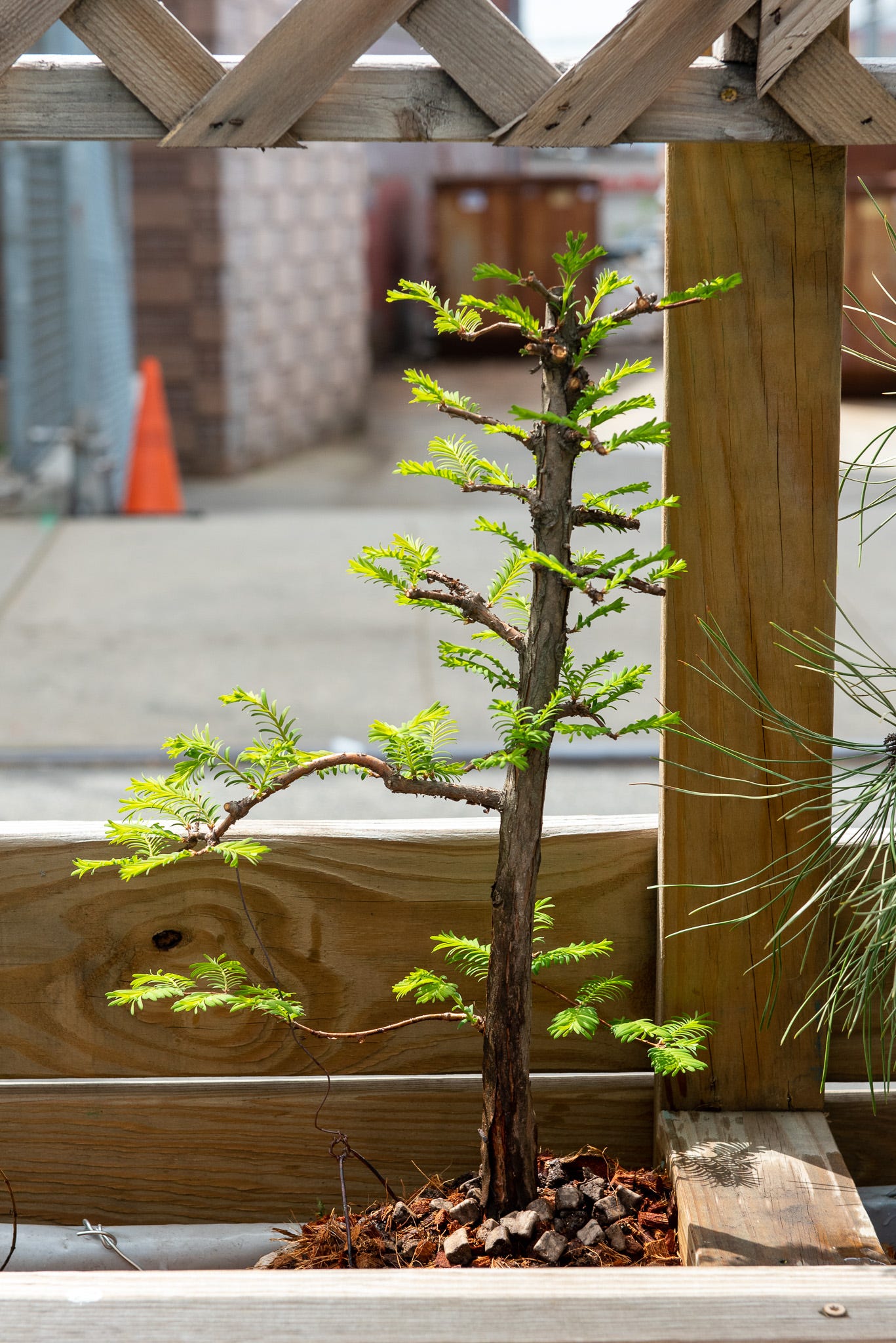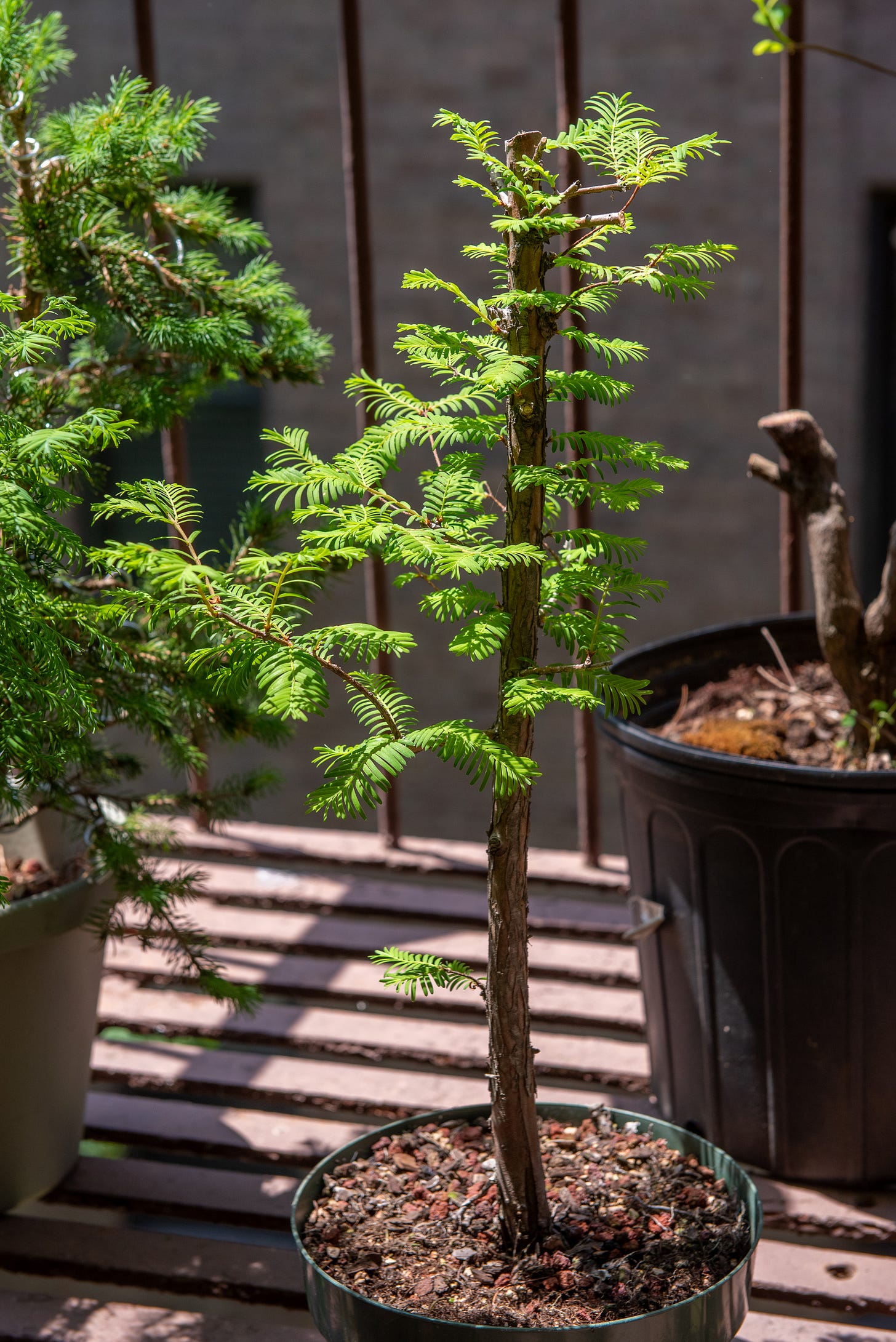I’m pleased to say that the trees I worked on at the beginning of the season are recovering well. Above you can see the delicate new foliage on a red maple I repotted six weeks ago. During the repot I uncovered more of the trunk and changed the planting angle, bringing it from this…
…to this.
An elegant trunkline, if I do say so myself. Since I’m focused on growing this tree out I left most of the roots intact, only trimming the ones required to expose its root flare. The maple will spend the rest of spring and summer acclimating to new soil.
Spring is considered the best time to do major work on a tree, particularly as it’s awakening from winter dormancy. During this brief window, chemical signals up and down the plant prime it for new growth. Roots set their energy stores free into the newly flowing sap.
Bonsai training can be traumatic for a tree. (You try losing 80% of your rootball in a day!) This active phase of growth softens the blow and helps the tree recover quickly. If I repotted this maple in the dead of winter, it wouldn’t start to heal its wounds until the spring—an open invitation for infections.
The blueberry I chopped one month ago is full of new growth.
This tree lost almost all of its leaf buds. Now its entire store of energy can be concentrated into the few that remain.
New leaves are still developing their chlorophyll. In the absence of that green pigment, compounds like anthocyanins may tinge the leaves other colors. The process occurs in the reverse during fall; chlorophyll decomposes as the leaf shuts down, letting other colors peek through.
I transferred my larch from organic soil to bonsai mix and gave it a larger pot to fill in. There’s a neat nebari underneath that mulch, but the roots need work to develop the right radial pattern necessary for bonsai.
One step at a time. For now, the tree is sprouting new foliage. I love the look of larches this time of year, each one a constellation of fireworks.
I forgot to take a photo before pruning my dawn redwood, so here’s how it looked last fall. Just imagine it without the leaves and with new buds ready to pop.
I’ve cut the lanky branches back to stubs.
Last year, the redwood’s major trauma was repotting into new soil. I let it grow wild to recover. New branch growth fueled new root growth. Now that root growth will fuel a new round of branch growth.
Here is the tree when I first bought it in 2021. Through this cycle of growth and cutbacks, the branch structure will form bit by bit: thick at the base, then tapering down to twiggy tips.
New growth is vigorous, but it’s also fragile. Young leaves and stems break easily. They need time to produce the waxy cuticle that protects them from drying winds and adds rigidity to their forms. I recently snapped the trunk of one of my fig trees by trying to wire it before the new growth had sufficiently hardened off. An annoying setback because I have no one else to blame.
Working on these trees has made me eager to get my hands back on them, but all I can do now is watch them grow. Observe how they respond to their new conditions and adjust my care accordingly. Vigorous growth is important in the life cycle of a tree. So is exercising patience.
Tree reading
As global warming damages our native ecosystems, tree planters looking to the future are pushing species from hotter climates. [Mercury News]
NASA is working with the federal government to take a census of the nation’s oldest trees. [NASA]

